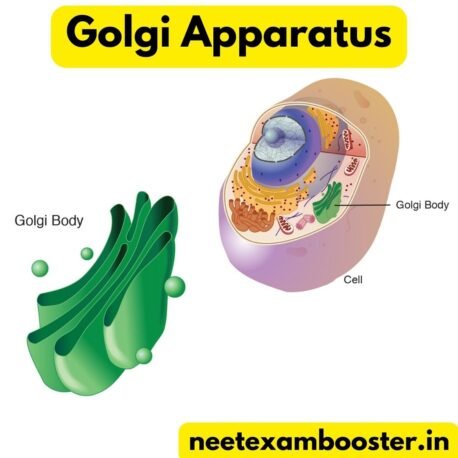The Golgi apparatus stands as a cornerstone of cellular organization, orchestrating a myriad of essential processes crucial for cell survival and function. Its intricate structure and multifaceted functions underscore its significance in both animal and plant cells, highlighting the remarkable complexity of cellular biology.

Golgi Apparatus and its Functions
- The Golgi apparatus was first discovered by the Italian cytologist Camillo Golgi in the nerve cells of an owl in 1898.
- Also known as the lipochondria, idiosome, dalton complex, or Baker’s body, the Golgi apparatus is present in all eukaryotic cells except mature sieve elements in plants and mature sperm cells and RBCs in animals.
- The Golgi apparatus develops from invaginations of the plasma membrane, sometimes from the evagination of the nuclear membrane or from the endoplasmic reticulum.
- The structure of the Golgi apparatus includes tubules, vesicles, and Golgi vacuoles.
- The forming face of the Golgi apparatus receives vesicles from the endoplasmic reticulum, while the maturing face, which is towards the plasma membrane, gives out the contents in the form of Golgi vacuoles or cisternae.
- Cisternae are flat, disc-shaped sacks with swollen ends, curved parallelly, and have smooth membrane sacs; their diameter is 0.5 micrometers to 1 micrometer.
- The Golgi apparatus is a polarized cell organelle with distinct cis and trans faces.
- Tubules are short, branched, and interconnected filamentous structures that develop on the sides and at the maturing face of cisternae.
- Vesicles are small sacs that develop from tubules; they are of two kinds, smooth vesicles with secretory granules and coated vesicles covered by fine bristle-like outgrowths.
- Golgi vacuoles are large, rounded sacs produced by the concave surface of the Golgi apparatus; some function as lysosomes filled with granular substances.
- The Golgi apparatus packages materials to be delivered either to intracellular targets or secreted outside the cell.
- It is the site of formation of glycoproteins and glycolipids and plays a role in the formation of root hairs from the root epidermal cells and the synthesis of the acrosome of the animal sperm cell.





 155 out of 200 questions were directly asked from these notes in NEET 2024
155 out of 200 questions were directly asked from these notes in NEET 2024

Pingback: What is dihybrid cross definition? - Mendelian Genetics and Punnett Squares